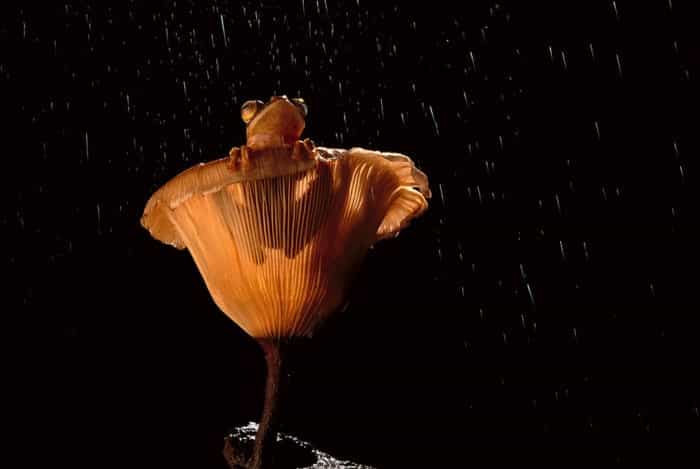The harlequin tree frog flies on ruby wings

Bec Crew
Bec Crew

WITH A REDDISH-brown body, bright yellow flanks, and extensive webbing on its fingers and toes in an umissable jewel-tone red, the harlequin tree frog contrasts beautifully with the dense forests of South East Asia that it calls home.
Found in Indonesia, Malaysia, and the Philippines, the harlequin tree frog uses its large, ruby red feet like wide, fleshy wings to ‘fly’. Well, it glides, technically, which experts refer to as ‘controlled falling’.
Controlled falling might not sound like much, but it can get you several metres through the air, which is significant for something as small as a frog. It’s an incredibly efficient way to get around, and allows these little guys stay high up in the canopy, away from predators on the forest floor.
This, of course, makes the species tricky to study, so not a whole lot is known about the harlequin tree frog, which by all accounts is relatively common in its natural habitat.
What we do know is they’re closely related to some of the most well-known flying frogs in the world, including Helen’s flying frog (Rhacophorus helenae), a huge green tree frog from southern Vietnam that was only just discovered in 2013.
And then there’s Wallace’s flying frog (Rhacophorus nigropalmatus), perhaps the most famous flying frog in the world, because it was likely the first of its kind known to science. You can watch Bill Bailey showing its skills off here.
We also know that the harlequin tree frog builds elaborate foam nests that it attaches to vegetation overhanging a pond or stream.
Mating is the only thing that will get these frogs to come to ground – they’ll aggregate in noisy little groups, the males calling out to the females in what onlookers have called “brief, raspy chuckles.”
You can see another of its relatives, the Malabar flying frog (Rhacophorus malabaricus) from India, constructing its foamy nest in the video below, while a much smaller frog from a whole other species tries to awkwardly mate with it:
Frogs aren’t the only ones that have super-sized their leaping ability into an airborne cruise – certain species of lizard have done it too.
The difference is that, unlike flying frogs, whose wings are their feet, species like the five-lined flying dragon (Draco quinquefasciatus), also from South East Asia, has stretched skin along its flanks that works like a wingsuit.
The good news is that all that lofty living has kept the harlequin tree frog out of reach of many predators, so the species is not of concern to conservationists just yet. But with population numbers in decline, and deforestation being a constant threat, these gorgeous little frogs deserve a watchful eye.
Here’s one being adorable in a flower:

(Image credit: Frans Lanting Studio/Alamy)

